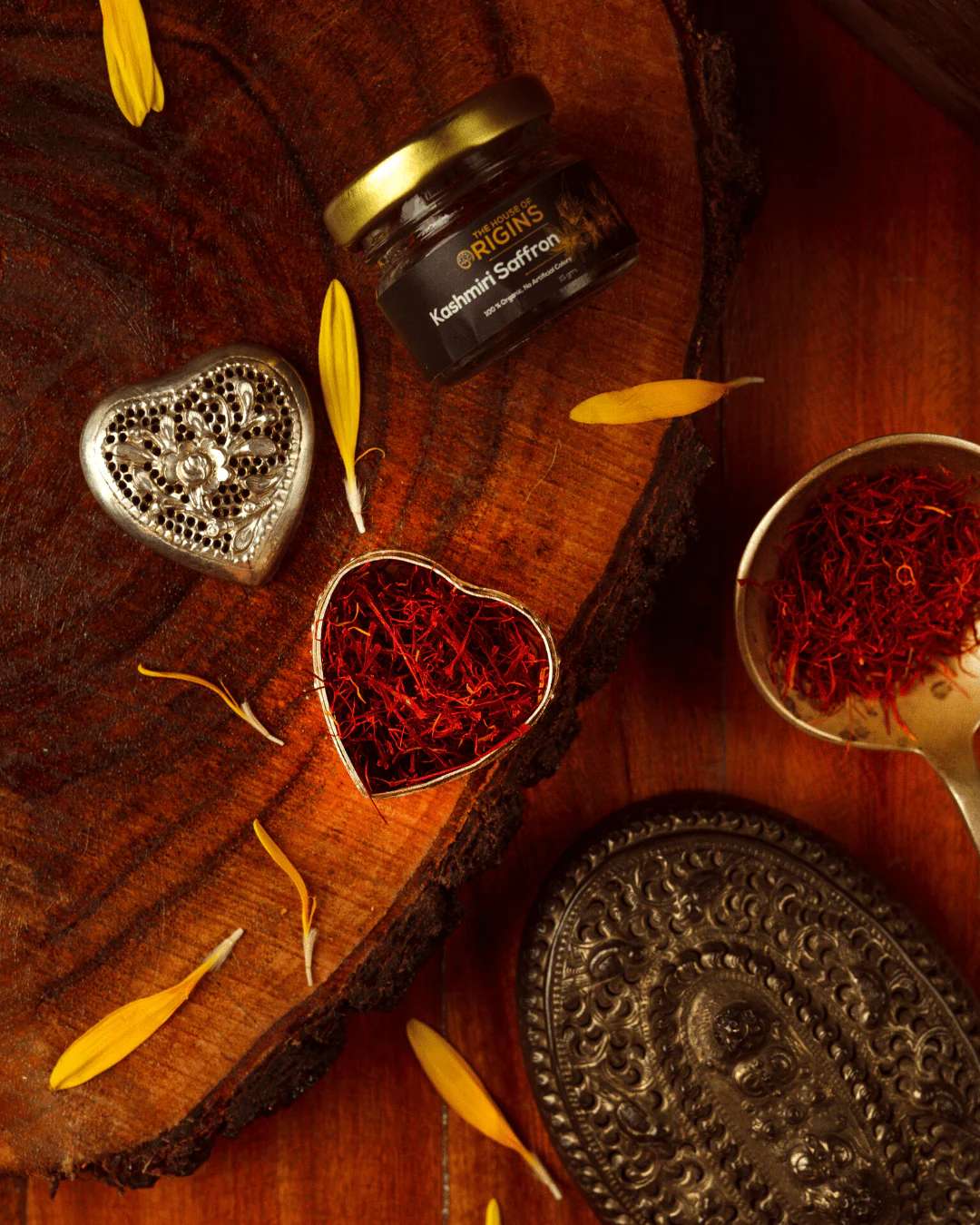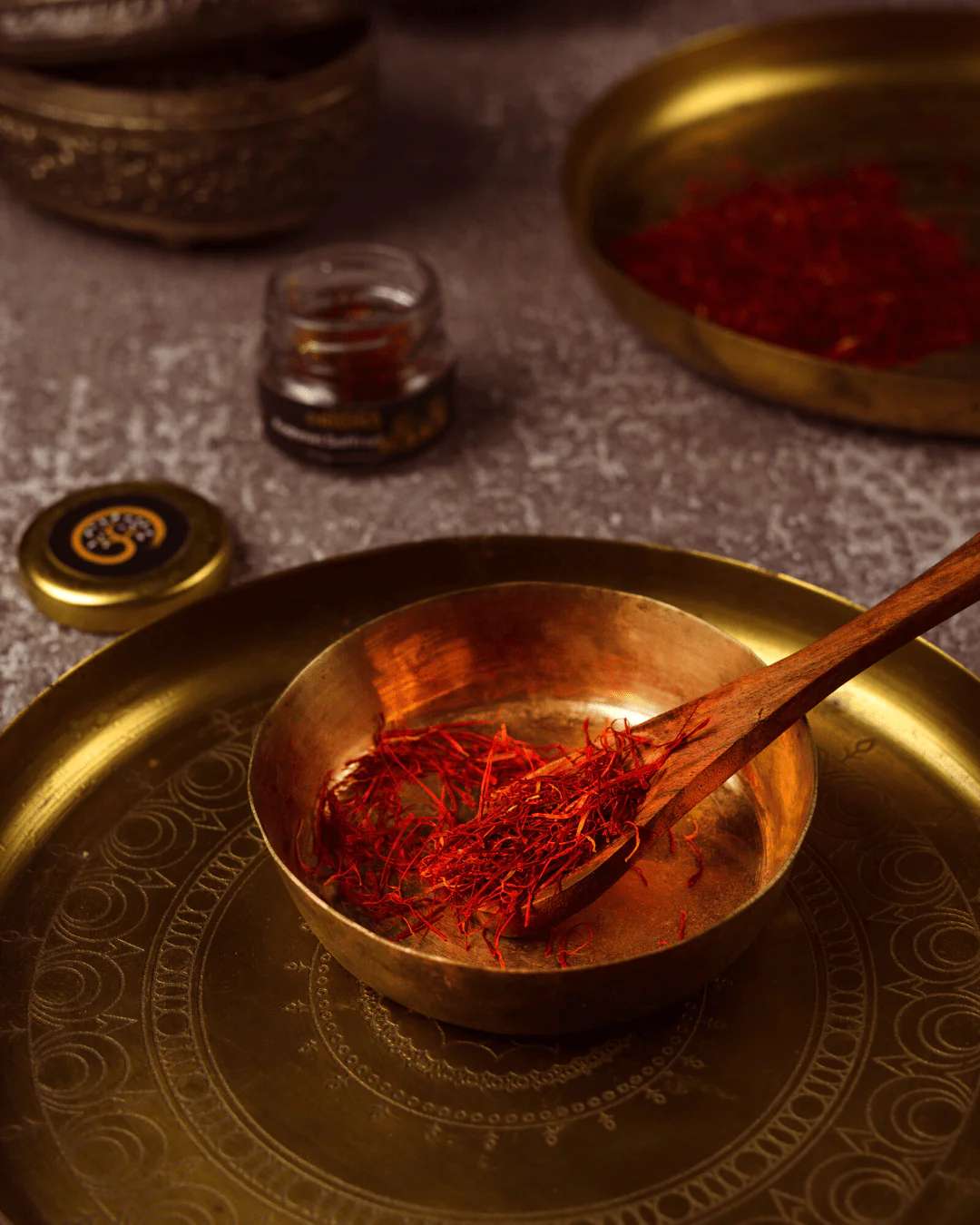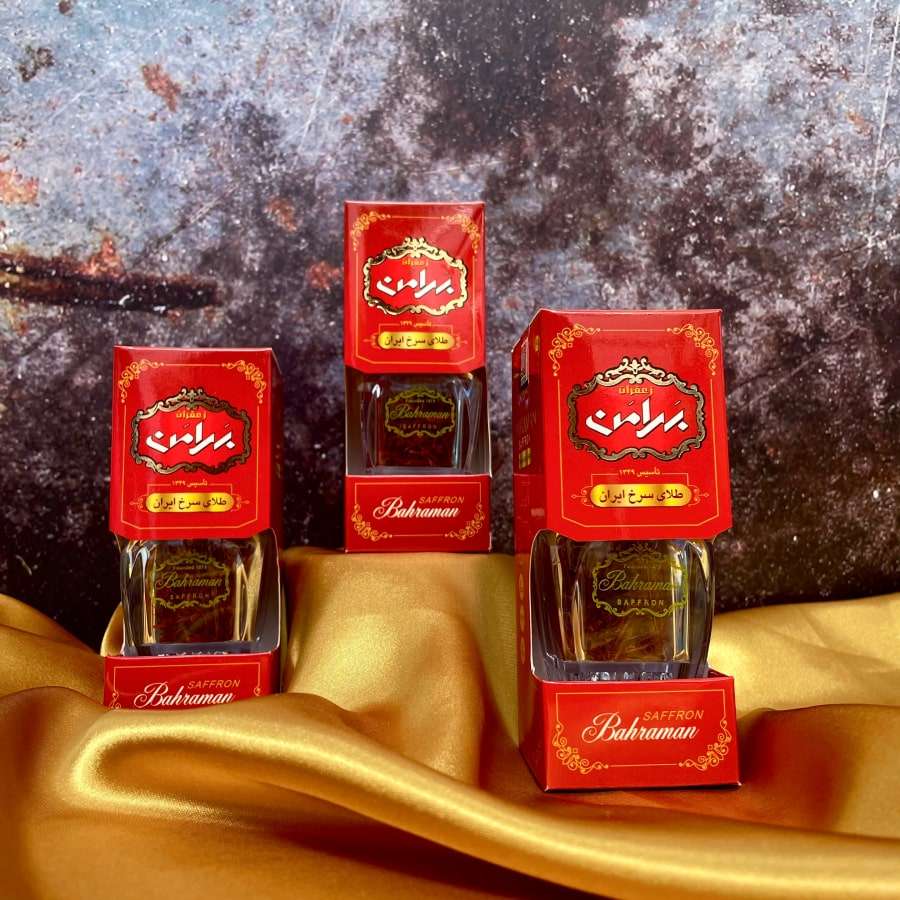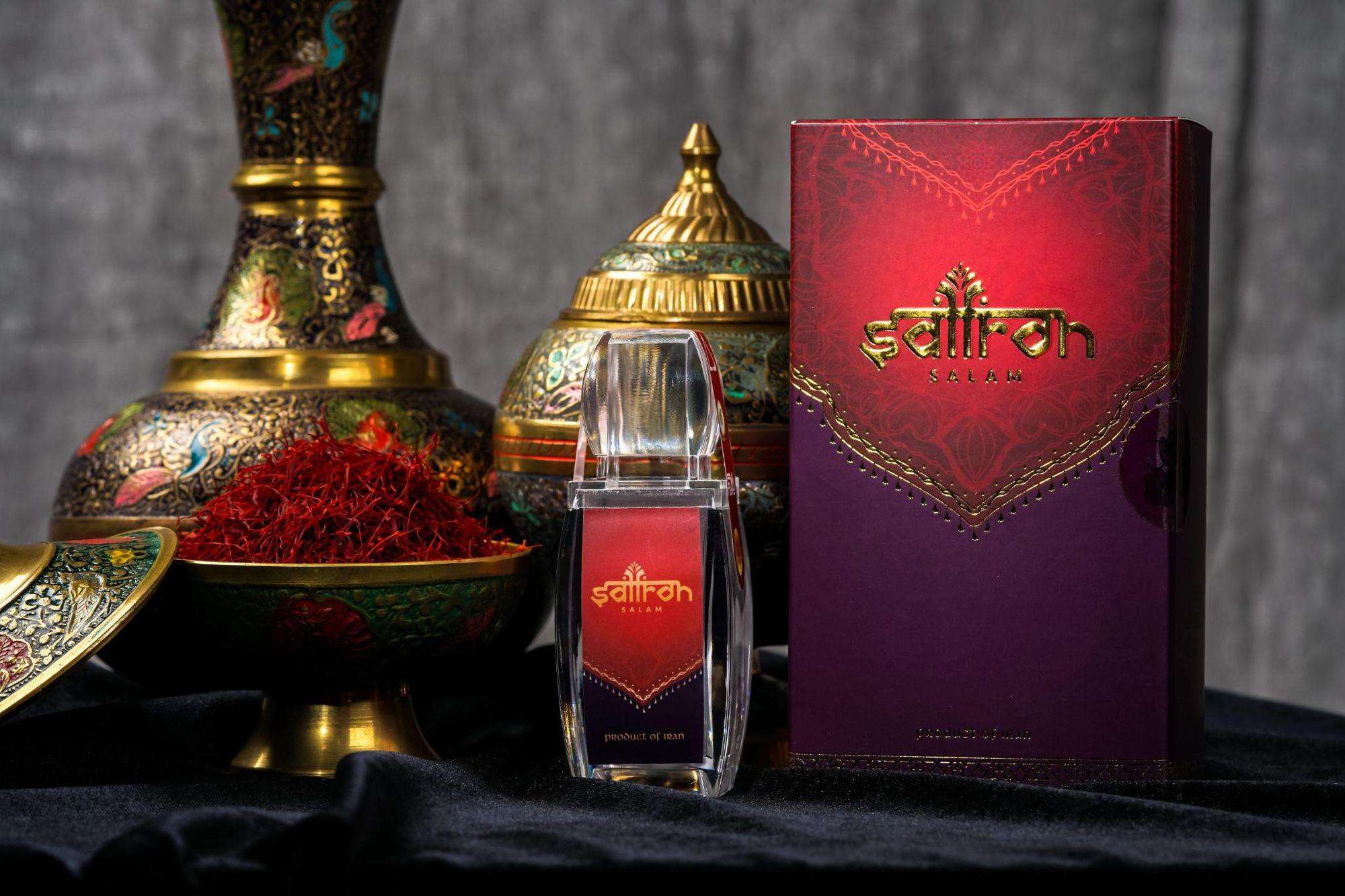Saffron
Ingredients
Ingredients:
100% organic saffron.
Nutritional value per 100 g
Energy: 310 Kcal
Carbohydrates: 65.37 g
Protein: 11.43 g
Total Fat: 5.85 g
+ Cholesterol: 0 mg
+ Dietary Fiber: 3.9 g
Vitamins
Folates: 93 μg, Niacin: 1.46 mg, Pyridoxine: 1.010 mg, Riboflavin: 0.267 mg, Vitamin A: 530 IU, Vitamin C: 80.8 mg
Electrolytes
Sodium: 148 mg, Potassium: 1724 mg
Minerals
Calcium: 111 mg, Copper: 0.328 mg, Iron: 11.10 mg, Magnesium: 264 mg, Manganese: 28.408 mg, Phosphorus: 252 mg, Selenium: 5.6 μg, Zinc: 1.09 mg
Product's information
Health benefits:
Reduce blood fat, support diabetes treatment. Support for weight loss and diet regimens. Regulate blood pressure, stabilize the heart. Strengthen the respiratory system, fight asthma, treat cough and sore throat. Improve eyesight. Anti-inflammatory and anti-inflammatory. Aphrodisiac, cure impotence. Improve kidney and excretory system. Saffron supports cancer treatment, treatment of digestive disorders, detoxification. Relieves menstrual pain in women. Saffron pistil sedation, sleep well, reduce stress, improve memory.
Expanded information
Negin saffron is the most premium and quality fiber. Negin yarn is cut off the yellow leg, leaving only the yellow leg and the whole red top. According to the experience of saffron growers and harvesters in Iran, the golden dot is where the most aroma and nutrients of the whole saffron thread are concentrated. Therefore, Negin fiber has a strong fragrance and higher nutrition than other fibers.
Read more:
√ What do you know about saffron?
√ Nutritional value of saffron
√ How to use saffron?
√ Saffrron for kids and olders
Answer
- 01. Why is Saffron the most expensive spice in the world?
Country of origin:
Saffron is believed to have originated from the Kashmiri region of India, Iran and Spain. In France and Italy there are also people who grow this spice. The spice that we often talk about when we hear "saffron" is actually just a few pistil from the flowers of the saffron plant (Crocus sativus). The pistil gives a characteristic yellow color, a sweet herbal smell and a light bitter taste that is actually the pistil - the pollen germination - at the end of the red pistil, the female genitalia of the plant.
How to manually harvest:
There is no other way, Saffron must be harvested for several hours before sunrise, when the saffron petals are still not in bloom. Then, people patiently and carefully separate each pistil (each flower only gives 3 pistils) from the flower. The pistil is dried and stored to strict standards to preserve quality for both color and flavor.
High source of nutrients:
Reduces Mood Swings. Manages Blood Pressure. Calms Morning Sickness. Aids In Digestion. Gets Rid of Cramps. Protects Against Heart Disease. Cures Respiratory Illness. Reduces Hair-Fall. Aids in Better Sleep. Heals Skin Problems. Helps Avoid Congestion Due to Allergies. Helps Experience Movement of the Baby.
Use saffron every day to protect your health, improve your quality of life.
- 02. Which territories produce the best saffron?
In the world market, there are 3 famous saffron material areas: Kashmiri from India, Saffron Iran and Saffron Spain. Of the three above raw material areas, Saffron in Kashmir has better quality because the climatic and soil conditions suit them.
To assess the quality of saffrons being circulated in the Vietnamese market, we have listed a few brands of saffron pistil in India that are widely used and trusted by the people for quality.
- 03. How is saffron harvested?
Saffron is a grassy stalk located deep below the ground. Each saffron plant produces about four 4 flowers. Large, strong petals bloom in clusters. And, each flower gives only two to three stamens.
The saffron flower is purple in color. The flowers bloom in the fall, so now is the right time to harvest the saffron pistil.
Saffron must be harvested for a few hours before sunrise, when the saffron petals have not yet bloomed. The reason is to make the flowers easier to pick and help protect the precious red stamens inside. Buds are carefully selected and placed in the basket.
On the same day, the pistil - the 3 tiny red strands inside the flower - are carefully separated from the damp petals. It's a delicate process that takes hours with a skilled hand and patience.
In the evening, the bright, threadlike pistils are dried over a fire burned from wood wood. This is a process that adds richness in both color and flavor to the saffron.
About 4,000 new flowers produce 28.3 grams of saffron powder - which means it takes a lot of effort and time to get that little saffron powder.
- 04. How many types of saffron are there on the market?
There are many types of saffron on the market with decreasing nutritional value as follows: Negin, Sargol, Pushal, Bunch, Konji.
Negin saffron is elongated and thicker than the regular saffron, the body is straight (no ripples) and is at least 1.5 cm tall. Negin saffron is red (evenly unbroken), pure flavor with a hint of bitterness. Exceptionally strong fragrance.
Sargol Saffron is 1cm long, oval or rod-shaped, round in shape, and little fracture is seen in the fibers. Sargol Saffron has a very strong red color. Light, light bitter taste, strong aroma.
Poushali Saffron is thread-thin with a 2 - 3 mm design. Its shape is quite similar to the straight as Negin but with a bit of a ripple. Red yellow (its red color is more than yellow). Great fragrance. The purity is quite bitter.
The three mentioned above have the highest nutritional content, selected for sale in the Vietnamese market. The remaining two (listed below) are typically selected for food processing or pharmaceuticals.
Bunch Saffron The size ranges from 2 to 3 cm, oval, round, long and elongated, red - white. The taste of Saffron Bunch is quite bitter. Great aroma and exceptional essence but its power aroma is inferior to saffron Sargol.
Konji saffron The tail of the pistil, behind, is light yellow or creamy white. Usually packaged into saffron powder.
- 05. Does Saffron Help You Protect Against UV Rays?
Saffron can be an excellent natural ingredient, acting as an excellent sunscreen protection, protecting the skin from the sun's harmful UV rays. If you use it regularly, it will fade dark spots and other blemishes on the skin, making the skin light, even and healthy.
There are many ways you can use saffron daily support for your skin:
1. You can take the amount of moisturizer or anti-aging cream that you use every day, put it into a small clean box plus just a stigma saffron. Leave there for about 20 or 30 minutes, the nutrients in the saffron will blend into the cream. Precious nutrients from saffron will follow a soft cream that penetrates deep into the skin and promotes the protection and care of your skin to always be young, prevent wrinkles, dispel pigmentation.
2. Or, you soak a few stigma saffron into milk, then pat it gently on your face, which will gradually lose the sunburn, help your skin color, bright and beautiful.
3. Or, add a few stigma saffron into rose water and you have a nice, skin-rejuvenating blend right away. This will also bring a youthful look to the face.
4. Or you use about 2 or 3 stigma saffron for 2 tablespoons of turmeric powder mixed with a little clean water (or unsweetened milk) to create a paste. Apply this on your face to reduce pigmentation and dark spots.
- 06. Does saffron help with beauty?
- Saffron helps you to have beautiful skin. Abundant in potassium, saffron helps in cell repair and regeneration and is also anti-inflammatory and anti-fungal. Applying saffron strands along with mix soothes skin and treats acne breakout.The goodness of saffron is used in a wide range of beauty products and creams and the following are the reasons why you should be using saffron based cosmetics and creams.Treats Skin Pigmentation:Saffron works as an amazing anti-solar agent and shields the skin from harmful UV rays of the sun and protects the skin. Regular use fades away the dark spots, blemishes and brightens the skin tone by enhancing the complexion.Fights Acne:The strong antibacterial and anti-inflammatory properties of saffron combat acne breakouts. The healing properties of saffron aid in removing dead cells and in clearing the scars.Glowing Skin:Saffron has the ability to stimulate blood circulation and allow the skin to breathe. Using saffron based face packs regularly provide a glowing complexion.Heals Wounds:Certain Ayurvedic creams and lotions rich in saffron help in clearing wounds, especially those caused by burns. The traditional medicine endorses saffron in clearing sunburns, suntan as it is known for re-epithelialization of the wound.Promotes Hair Growth:Rich in antioxidants saffron prevents hair loss. It is known for repairing hair follicles and promoting hair growth. Use saffron and milk-based conditioners for silky hair.


.jpg)
.jpg)

